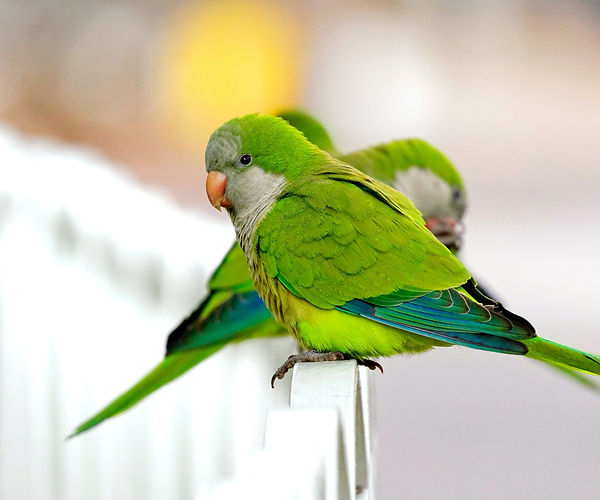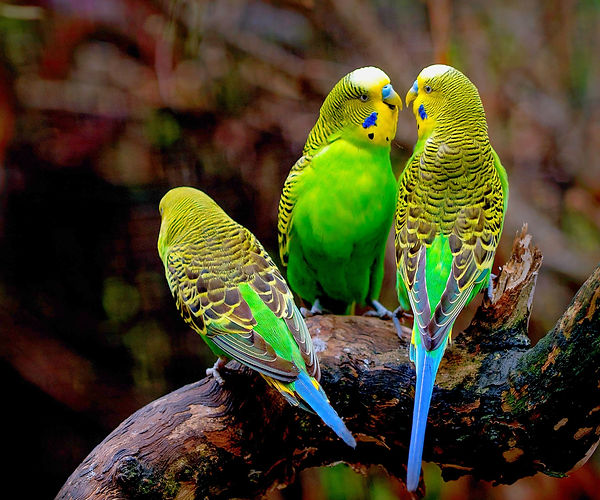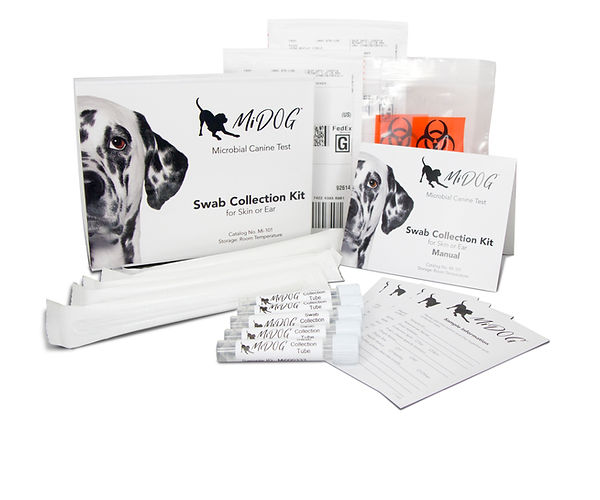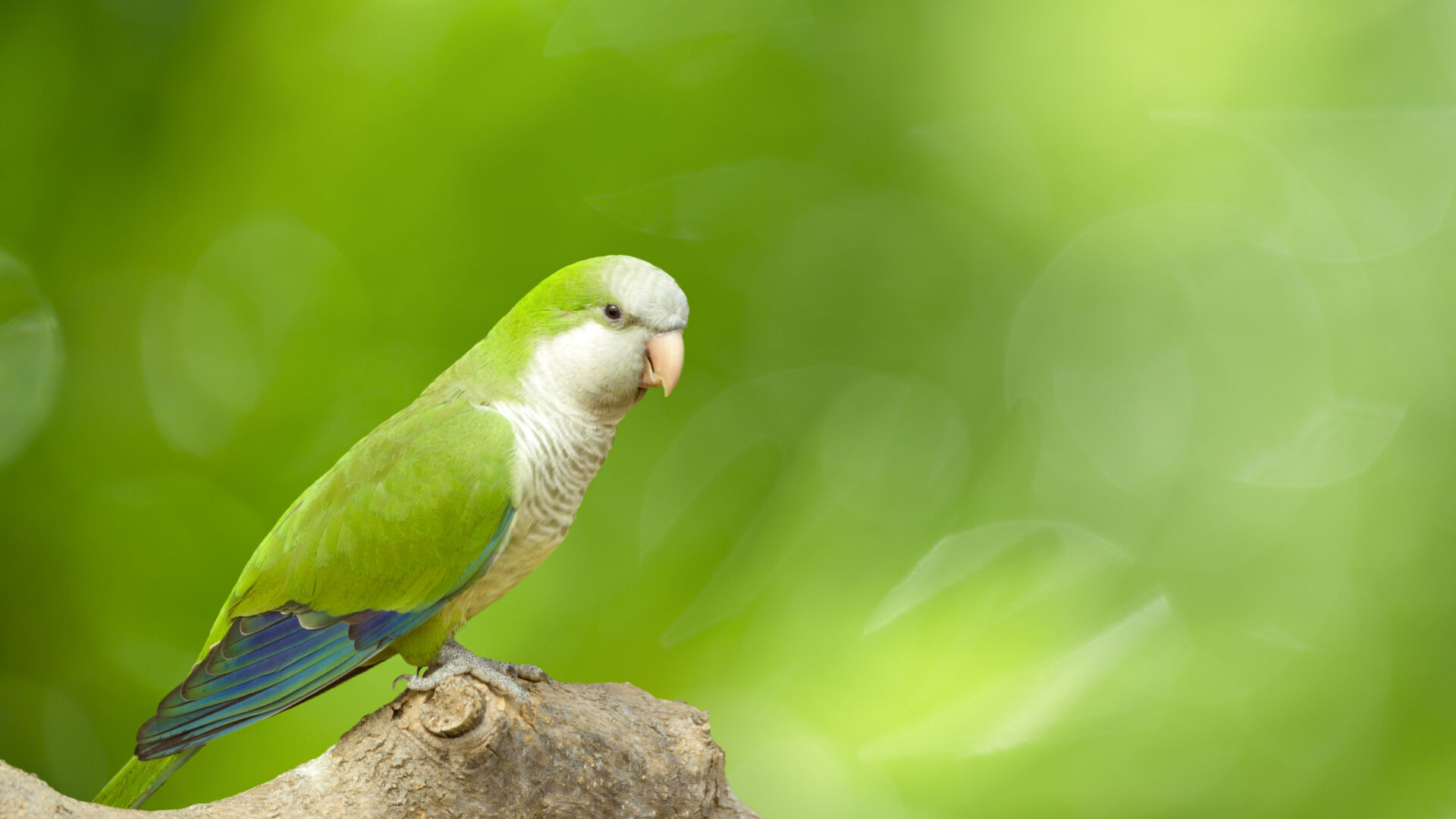
New research on the quaker parrot epidermal microbiome underscores the importance of Next-Gen Sequencing in avian medicine.
Feather damaging behavior (FDB) is particularly common in captive birds, with an estimated prevalence rate of 11.7% in psittacines [1]. FDB can be difficult for pet owners and veterinarians to prevent, and can often be debilitating for your feathery friend. Fortunately, new research on this difficult-to-treat condition is on the horizon!
In the past, diagnosing parrot skin diseases has proven to be difficult because there has not been a baseline for the parrot epidermal microbiome, both in birds with and without feather loss [2]. FDB is uncomfortable at best for your feathery friend, and if left unaddressed may result in skin infections and further complications. Current prevention and treatment methods for FDB are variable and are often dependent on the root cause of your bird’s FDB. New research using Next-Gen Sequencing (NGS) technology has provided exciting insights into the epidermal microbiome of quaker parrots (also known as monk parakeets) and the possible role of bacteria/fungi in FDB manifestation, which could have substantial impacts on how veterinarians treat the disorder [2].
If you suspect your bird is suffering from FDB, it is recommended that you make an appointment with your veterinarian to diagnose and provide a treatment plan tailored to your bird’s needs as soon as possible.
What is Feather Damaging Behavior?
FDB refers to the characteristic plucking behavior often observed in captive birds, which can range from mild over-preening to self-mutilation [3]. While the etiology of FDB is still the subject of intensive investigations in veterinary medicine, various possible causes include bacterial or fungal infections, liver disease, cancer, inflammatory skin conditions, infectious diseases, epidermal or internal parasites, metabolic or nutritional disorders, heavy metal poisonings, allergies, stress, boredom, and more [3]. In terms of predisposing factors, malnutrition is one of the largest contributing factors to FDB, as “basic seed and table food diets often create nutritional deficiencies that cause abnormal skin and feather development” [3]. Dyes in food may also cause allergies.
Proper animal husbandry is critical in providing the appropriate level of moisture to your bird’s skin and also ensures better psychological effects [4]. To aid in your pet bird’s recovery, the Merck Manual of Veterinary Medicine recommends these at home environmental changes once feather plucking is diagnosed and various medical reasons have been excluded and/or treated:
- Ensure your bird receives 12 hours of light and 12 hours of dark quiet each day.
- Spend time with your bird, not only to help reduce their anxiety but also to identify any triggers to their FDB.
- Mist/bathe your bird regularly.
- Make sure your bird has yours to help distract from plucking.
To learn more about veterinary recommendations to enrich your pet bird’s quality of life, visit the Long Island Bird and& Exotics Veterinary Clinic tips page.

Parakeets enjoy relatively humid environments.
What Can New Research Tell Us About Feather Damaging Behavior?
Historically, culture-based methods and PCR techniques have been used to assess potential avian infections, but there are notable diagnostic shortcomings for both [2]. Only one percent of all microbes can actually be cultured using standard culturing methods, which lack the sensitivity and ability to cultivate difficult to grow pathogens [2]. While PCR provides more rapid results, the diagnostic value of these tests is limited because they are only able to target a known set of pathogens.
Next-Gen Sequencing (NGS) has increasingly helped researchers and veterinarians characterize the avian skin microbiome. A collaboration between Texas A&M University and MiDOG has shed light on the role pathogens may play in feather-destroying behavior manifestation. This is one of the first studies to use NGS as a preliminary diagnostic tool for bacterial and fungal communities of captive birds, allowing veterinarians to assess the pathogenicity of bacteria and/or fungi and pathogen resistance between co-housed birds. The most abundant bacterial species for intact feather quaker parrots were Exiguobacterium indicum, Sphingomonas yabuuchiae, and Corynebacterium spp. Contrastingly, birds with evidence of feather loss were significantly enriched with Streptococcaceae, Methylobacterium, Clostridiales, and more. This research not only supports the use of NGS when attempting to diagnose potential FDB cases but also indicates a more complex interaction between the avian skin microbiome and feathering diseases than was previously thought.
Key takeaways from the study include:
- Quaker parrots have low numbers of skin bacteria compared to mammals.
- Bird skin and microbiota can be affected by the skin microbiota of cage mates.
- Skin microbiota of quaker parrots discoverable by PCR remains uncultivatable and has received minimal clinical study.
Read the study here.
The MiDOG All-in-One Microbial Test offers comprehensive diagnostic information for birds suffering from feather-destroying behavior. Utilizing NGS technology to detect and quantify all microbial DNA through untargeted and comprehensive sequencing and quantitative comparisons to reference databases, the MiDOG NGS technology provides a useful opportunity to shed light on the microbial makeup of your bird’s skin microbiome for clinical application. The MiDOG microbiome test is a microbial identification test grounded on scientific research that provides veterinarians DNA evidence for the guided treatment of bird diseases and disorders, such as feather destroying behavior.

Find out if your vet uses MiDOG before you book your next appointment!
For health-related questions about your reptile or other exotic pet, reach out to a veterinarian that specializes in exotic pets.
References
- Ebisawa, K., Nakayama, S., Pai, C., Kinoshita, R., & Koie, H. (2021). Prevalence and risk factors for feather-damaging behavior in psittacine birds: Analysis of a Japanese nationwide survey. PLOS ONE, 16(7), e0254610. doi: 10.1371/journal.pone.0254610
- Krumbeck, J., Turner, D., Diesel, A., Hoffman, A., & Heatley, J. (2022). Skin microbiota of quaker parrots (Myiopsitta monachus) with normal feathering or feather loss via next-generation sequencing technology. Journal Of Exotic Pet Medicine. doi: 10.1053/j.jepm.2022.04.004
- Lightfoot, T. (2020). Skin and Feather Disorders of Pet Birds – Bird Owners – MSD Veterinary Manual. Retrieved 30 April 2022, from https://www.merckvetmanual.com/bird-owners/disorders-and-diseases-of-birds/skin-and-feather-disorders-of-pet-birds
- Chitty, J. (2003). Feather plucking in psittacine birds 2. Social, environmental and behavioural considerations. In Practice, 25(9), 550-555. doi: 10.1136/inpract.25.9.550
Categories: Birds/Parrots, Exotic Pets, Next-Gen DNA Sequencing Technology, Skin Health, Veterinary Dermatology

